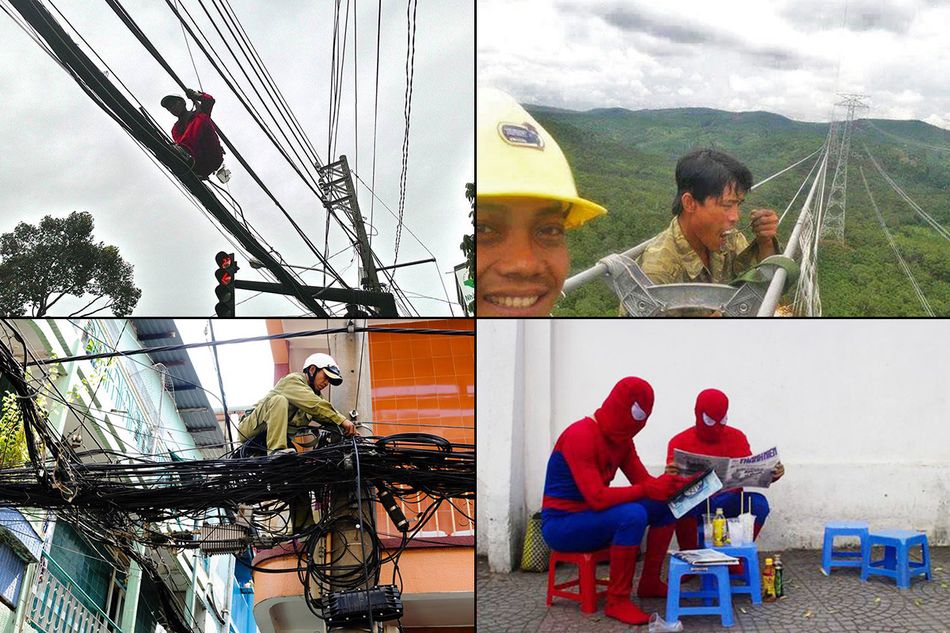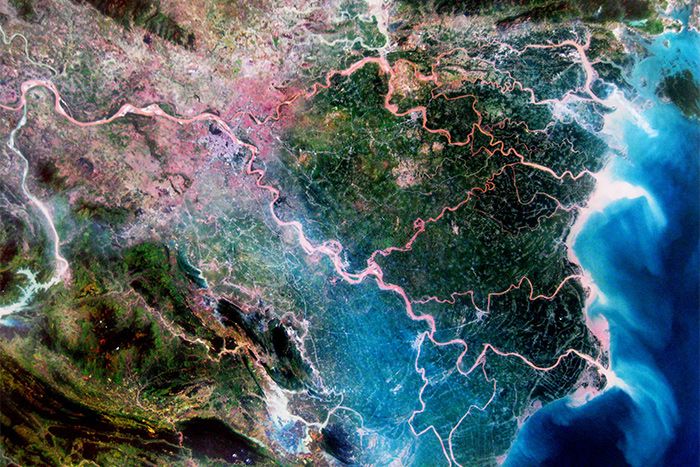Every country has its national attire. China’s has the cheongsam, Japan the kimono, Korea the hanbok, America denim and Vietnam has its áo dài. Like the country from which it originated, the áo dài has undergone many transformations that have resulted in its current form.
The áo dài’s evolution dates back to the nineteenth century when it was born from its ancestor, the áo tứ thân, which was donned by most Vietnamese woman.
Comprised of 4 narrow layers (two at the front and two at the back), the áo tứ thân was a loose dress worn outside a white, thin blouse, worn over a halter, along with a fabric belt, allowing the wearer to make graceful movements when walking.
For peasants, color options were limited to muted blacks or browns though a high-class version, the 5-paneled áo ngũ than, was available in various colors.

Áo tứ thân
In the 19th century, people looked to simplify things a bit, conjoining the two narrow panels and setting the stage for the very first appearance of the modern áo dài. Another major change was Emperor Minh Mạng’s 1828 decree that standardized the fashion which had previously differed between North and South.

Áo dài after Minh Mạng's decree was worn over trousers
In 1930s, there was a painter named Cát Tường, who saw clothes as a significant facet of a country’s identity, especially pertaining to development. This idea led Tường to combine the áo dài with the Western dress of the French colonialists in Vietnam. The new gown was formed with 2 elegant panels reaching to the ground and fit the wearer’s body using pins and a nipped-in waist. Its collar, flaps and sleeves were influenced by the Western style as well.
Tường named his collection Le Mur (which means “the wall” in English and simultaneously symbolizes the Vietnamese meaning of his last name.)

Le Mur áo dài
Several years after, there was a tailor in DaKao called Dũng who sought to create a new structure for the áo dài. The result was the “raglan,” a sleeve based on Western fashion techniques which eliminated the clumping of material under the arms of the áo dài, bringing it a step closer to its current form-fitting style.
Related Articles:
- The Little-Known Hero’s Tomb Next To Bà Chiểu Market
- 17 Rare Photos of Vietnam Taken 120 Years Ago

Áo dài with Western "raglan" technique
Though the áo dài had been a daily outfit in the North until 1958, it had fallen out of fashion in the more trendy South. This all changed when “Dragon Lady,” Trần Lệ Xuân, made a fashion statement by wearing an áo dài with a bateau neckline and snug upper body. In no time, nearly all Southern women were wearing the previously old-fashioned dress.

Trần Lệ Xuân in her áo dài
The bateau style kept on rolling until the 60s when the hippy trend reached Saigon. During this period, the national gown adopted knee-length panels and the number of color options grew exponentially (there was even a tie-dye option!).

Áo dài with a hippy knee-length panels twist

During this period, the áo dài was relegated to use for special occasions or diplomacy purposes among the better off.

Áo bà ba became very popular in the South
When the đổi mới reforms pulled the country out of economic hardship in the 80s, the áo dài was resurrected and is now one of Vietnam’s defining national symbols.














